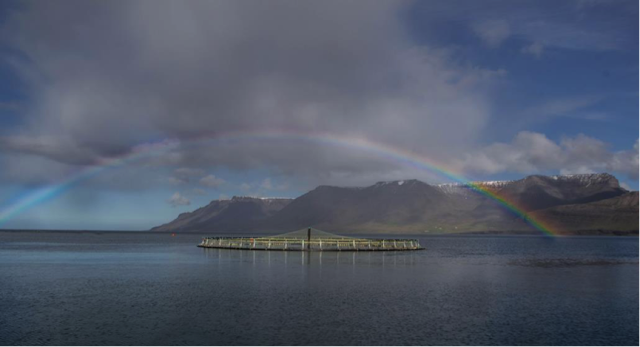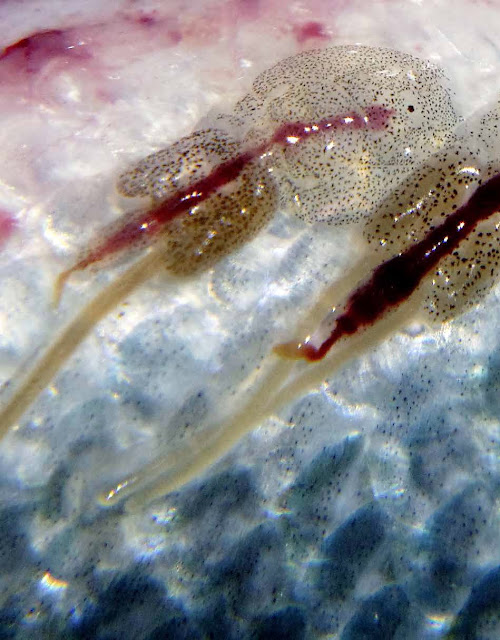The World Aquaculture Society (WAS) was created in 1969 and currently has nearly 3,000 members in about 100 countries. The international character of the society and the need to address specific the specific issues in various regions of the world, they currently have local chapters in the United States, Japan, Korea, the Asia-Pacific region and in Latin America and the Caribbean. Its annual meeting was held in Las Vegas, Nevada, from 22nd to 26th February this year.
At their most recent gathering, the society’s new president, Dr. Juan Pablo Lazo shared some of the strategies that he intends to implement to achieve the society’s objectives.
Aquaculture Society (WAS) meant to you?
It is an honor and a privilege for me to take charge of the World Aquaculture Society for the next presidential term. I am committed to promoting our Society in continuing its position as the leader in Science, Technology and Education Information exchange throughout the world.
Prior to becoming WAS president, what was your role in the organisation and what issues were you dealing with?
I have been a member of the society since the early 90’s and have been involved in organising several international symposiums on Aquaculture Nutrition as well as other WAS sponsored meetings. I served as the President of the Latin American and Caribbean Chapter of WAS from 2009 to 2011, and my role focused on encouraging greater integration between research, educational institutions and businesses, whilst promoting aquaculture development within the chapter. I then served on the board from 2011 to 2014 as a Director. As Chair of the Affiliations Committee, I focused on promoting and enhancing alliances with aquaculture organizations through the world.
Would you tell us about your background and how that experience will help the WAS and it’s membership?
I obtained my BS in Biochemical Engineering at the Monterrey Institute of Technology and Higher Education (ITESM). I then pursued a MS degree at LSU in Fisheries and Aquaculture and a PhD in Marine Science at the UT Austin, with a specialty in marine fish nutrition. I returned to my home country (Mexico) in 2000 to work as professor and research scientist in the Department of Aquaculture at the Center for Scientific Research and Higher Education of Ensenada (CICESE), a federal research centre dedicated to basic and applied research. I perform basic and applied research to support the development of marine fish farming in Mexico and Latin America. One of my research goals is to identify and evaluate ingredients that could potentially replace fishmeal and fish oil in formulated diets.
I have taught undergraduate, masters and doctoral courses at several universities in Latin American and has served as a thesis advisor for several masters and doctoral students in the US and Latin America. I have participated in several collaborative projects and consultancies aimed at the development of sustainable culture protocols of marine fish in the Latin American region.
What is your key objective(s) for your team as President? Where do you see the organisation benefiting most from your direction?
I believe that through adequate leadership and collaboration the society can significantly contribute to the sustainable development and integration of the aquaculture industry across the world. The quality of services provided to our members must be improved to focus more specifically on their particular needs closely coupled with our quickly changing trends and to increase global representation within the society of underrepresented groups particularly from Africa, Latin America and some Asian regions. I would also like to make WAS more visible and recognised in the global aquaculture community, and to increase our member involvement with our affiliates and vice-versa.
Social media plays a crucial role in the exchange of information and WAS must embrace technological venues as a means of communication and will be given a high priority if elected. During my term, There is an urgent need to improve the quality of our scientific journal, JWAS. A new Editor in Chief and new strategies have been put in place to attract the submission of higher quality papers and improve the impact of our scientific journal.
How do you draw together the various sides of the industry - aquaculture scientists, policymakers and industry suppliers - to provide a cohesive organization?
WAS serves as primary facilitator of information exchange, technology transfer, policy development and communication between all sectors engaged in aquaculture. I believe that by making WAS more visible and recognised in the global aquaculture community and by increasing our member involvement with our partners we can draw all key-players around the world together in developing the aquaculture industry in a sustainable way. We are now implementing new industry AWARDS to recognize industry leaders that have a strong impact on aquaculture around the world and should help in providing a more cohesive organization.
Since 2013 the supply of farmed seafood has overtaken wild caught seafood in terms of consumer demand. What is the position of WAS in supporting this growth in a sustainable and responsible way?
We need to be aware of the Challenges presented to us for meeting consumer demands for aquaculture products in the next 10-15 years. Although we produce nearly 50 percent of the fisheries products, we have a daunting task to double our current production by 2030, but this needs to be done in a sustainable manner using the Best Practices Guidelines around the world and this is where our Society plays an important role. We need to be concerned with what we leave to our future generations and the environment.
What is your vision for the future in terms of the organisation and the role of aquaculture in food supply?
I see WAS as becoming the leading, high-profile and most important aquaculture society in the world, committed to promoting the development of sustainable aquaculture across the five continents by assisting in the exchange of the latest scientific and technological information between the academic, private, government and non-profit sectors. WAS must also further develop its capacity for identifying the challenges faced by the aquaculture industry, and providing solutions in a timely, efficient and scientifically sound manner. I also envision WAS as a leading promoter of best-practice guidelines for the aquaculture industry, a key component of sustainable development
















